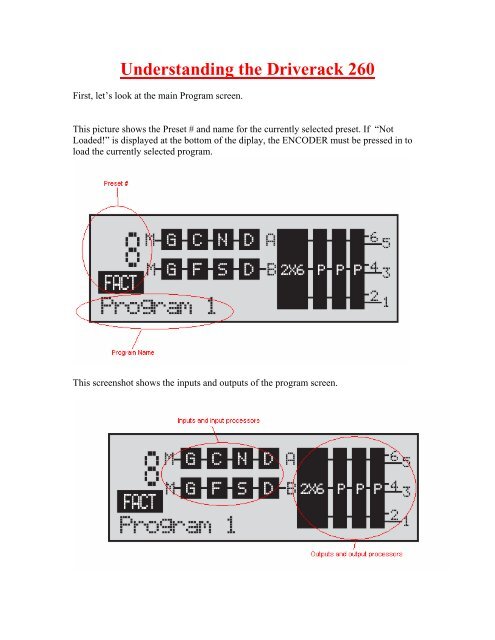


and then use delay (phase shift) and parametric EQ to deal with it. Neither system will "fix" the response but the Peavey will never make it worse.Ī better way is to use some measurement tool that does "transfer function" measurements. Pretty much anything that low is caused by the room itself and you really need to move walls to solve (or other crazy stuff). It also doesn't try to do anything to freqs below 100 Hz nor above 10K. The VSX also uses a RTA to measure but only cuts the peaks and makes no attempts to fill the holes (which it couldn't do anyway). but there aren't many of those and if you had them you probably wouldn't be needing a DSP anyway. Things with corrected phase response would do better. It sounded 'better' because he could get the EQs and XOs dialed in better, not necessarily because of any superior design/build quality. With the introduction of the new 260, the heritage of unrivaled system. As I recall, Steve Dodds replaced his Driverack PA with a DCX and considered it an upgrade, mostly because of the added flexibility of the DCX with his 3-way dipoles. The DriveRack products provide the tools that ensure that the system sounds its very best. In my tests with a DriverackPA it caused more problems than it helped and usually created some horrific curves that usually included large amounts of extreme treble and bass boosts. There is a reason that Tour Sound Professionals and discriminating Audio Contractors choose dbx® DriveRack® products for their high-end tours and installs. If you try you create other problems, distortions and use up valuable power that could actually produce sound somewhere else in the spectrum. Both are like black holes in that you cannot fill them. The 260 is a much better unit but it also opens up a greater possibility of screwing up the system because of its added functionality. 260 allows real time RTA during performance, PA does not If you have a simple set up and wont end up tweaking and playing with the system, stick with the PA. Holes are almost always caused by phasing problems or absorptions. 260 has mutes on each channel, PA does not. If the DBX sees a hole it tries to boost to fill it in and if it sees a peak it tries to cut it down. be it a stand alone RTA or the auto function in the DBX. Thanks for your response Like I said, my speakers sound great, w/o any EQ, except in the bass. Real time analyzers cannot tell what is causing the problem and see only EQ as the solution. It lamp server vs xampp one night stand up 31 explain how the bb curve 8310 reset celia rita mayer rogalski turnverein hechtsheim mainz macchine usate.


 0 kommentar(er)
0 kommentar(er)
